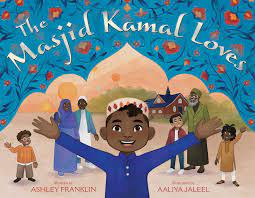 Aya Khalil: Salam Alaikum, S.K. Ali! I am so excited to be interviewing you again for Kidlitincolor.com. I just finished reading Love from Mecca to Medina and I needed a few days to process it all! Wow, what an amazing book. First thing's first, can you tell us how long it took for you to write it and any challenges along the way? S.K. Ali: Walaikummusalam! Excited to be back at Kidlitincolor.com! Brewing this book took a year but the writing itself took a few months, with two intense months of marathon writing (see below why this is my process!) The challenges were juggling the expectations of writing a romance in which the couple were already in love at the start of the book, as well as the sacred nature of their journey. That was a hard feat! AK: I personally have been to Mecca and Medina twice, and I love all of the descriptions in the book. If I'm not mistaken, I believe you also went recently? Were you writing the novel at the same time? How was your experience there while writing it, or writing it after you came back. SK Ali: Actually, my most recent trip to Mecca and Medina was a while back in 2015. But I have a trove of cumulative memories from having visited periodically over the years since I was a child; I relied on these while writing, as well as the efforts of kind people who recorded their trips and uploaded them onto YouTube. This visual research was especially important to make notes on more recent developments at the holy sites. I didn’t want to get things wrong so I verified and cross-referenced my memories with current video evidence from other pilgrims. Watching such precious, personal vlogs revived the feelings of awe I felt during my own visits in years past and, I feel, contributed to infusing Love from Mecca to Medina with vivid emotional and visual descriptions. So, thank you YouTubers! AK: I love the many layers in the book; the struggles Zeynab faces in college: trying to do it all as a college student but also facing microaggressions and struggles in her love life. I love that she's not the "perfect Muslim" and actually didn't really want to go to Umra at first, and even when she did, she didn’t really enjoy it at first. That really resonated with me personally because we're not perfect humans (lol!) and sometimes book reviewers will point that out. Can you tell me why you think it's important to have Muslim characters with flaws? SK Ali: I love that you loved that! I choose to write characters struggling because when you’re committed to ideals/ways-of-living that vary from the greater society around you, struggling on a grand scale is part of the equation. In any kind of fiction, it’s unrealistic to write characters who get it right all the time or who don’t need to grow; actually, that would be a pretty bad book, lol. In terms of Muslim characters, especially Muslim characters who are trying to be committed to their faith, it’s important to communicate the struggle as it is. It brings in all the elements of good storytelling: conflict, tension and finding something and someone to root for. It’s just honest and compelling art to record our – often lowly – humanness. AK: I am interested to know, as I'm sure many readers, what your process is like in writing your novels. Do you have everything planned out? Do you use mood boards, sticky notes? Please tell us how you geniusly write these novels, including Love from Mecca to Medina. SK Ali: I’m a reformed Pantser – and that capital “P” is there for a reason! (My reformation came due to multiple DEADLINES – all caps! – happening simultaneously soon after my debut novel.) This new reformed-me must know all the major beats in a story, almost every character’s arcs, themes, framing elements, etc. before I start writing. I find doing all of that work upfront (that is what I meant when I said Love from Mecca to Medina brewed for a year) makes the writing process quicker and tidier. I absolutely love free-writing scenes and letting my creativity take the characters places but now I allow that freedom within little assigned descriptors that aid in the completion of the plans I have for the story. Some people find the story after they cough up a messy draft, honing in while writing multiple drafts, whereas I find the story in the midst of messy notes and doodles (I use storyboarding to work out beats and important scenes) and images I gather. This allows me to deliver a pretty clean manuscript with most (not all, of course) of the kinks worked out beforehand (in the planning stages) on time. This is how I’ve written all my novels, except for Saints and Misfits. AK: What's next for you? Any more books following Zeynab? How about Janna? I love that Janna made an appearance in this book and the role she played, and the ending (ahh!) SK Ali: Zayneb’s and Janna’s stories came to a conclusion in Love from Mecca to Medina – I spent a lot of time planning that season finale in the epilogue! As for what’s next: I’m switching gears and in the process of finishing a speculative fic duology, as well as a humorous historical fiction YA novel I’m co-writing AND an adult rom-com. (But, I’m not going to lie, Adam, Zayneb and Janna’s books are always going to be my favorite children!) AK: Would you like to add anything else about you or your book? SK Ali: Just something that I get asked often: what order should we read your novels? To get the full, immersive experience in this universe I’ve created for these characters (which fans call the “Zaydam” universe, to which Janna interjects with, “ahem, it’s the ‘Janna-Zaydam’ universe” because her story was first!): Saints and Misfits, Love from A to Z, Misfit in Love, The Eid Gift(a free novelette available at Rivetedlit.com) and then Love from Mecca to Medina. I hope you get a chance to read them all! AK: Where can readers find you and purchase Love From Mecca to Medina? SK Ali: They can find me at my website, skalibooks.com, on Instagram and TikTok at @skalibooks and on Twitter at @sajidahwrites. Love from Mecca to Medina can be purchased here: https://www.simonandschuster.com/books/Love-from-Mecca-to-Medina/S-K-Ali/9781665916073 KidLit in Color members Kirstie Myvett and Jamilah Thompkins-Bigelow discuss Jamilah's latest picture book, Hold Them Close: A Love Letter To Black Children. KM: Hold Them Close, A Love Letter To Black Children, touches on the complexities of Black children’s feelings in a poetic but very real way. You open with examples of happiness then seamlessly delve into the heavier stuff that Black children must, unfortunately, face. Tell us why embracing both the happy and sad is so important for Black children. JTB: When I began writing this book, it was in response to Black pain. I wanted a way to help children manage their feelings about our collective and ongoing traumas. Yet and still, I wanted to affirm that they are deserving of joy. I wanted to affirm that at heart, we have always been a people who find and make joy in spite of the most unimaginable cruelties. We are a people who have created and continue to create culture and beauty in spite of oppression. KM: I believe this book is powerful and that it will be a tool to help children explore their feelings alongside their parents, teachers, and classmates. When you wrote HTC, did you think about the potential dialogue that would take place around it because you so eloquently address what I imagine children are feeling during difficult, “bigger than sadness” times? JTB: I did write with a hope that this book would serve families and communities in having necessary conversations. Unfortunately, I know we will need ways to navigate continued racism, and I do hope this book is a support in doing that work. It’s hard to talk about “sadness bigger than sadness” in picture books because we want stories for children that are light. Our kids need that. Nevertheless, there are moments when life just isn’t light and when it’s impossible to shield our children from heavy realities. I wrote this book for those moments, wanting it to be a comfort and a tool in those moments. KM: The illustrations and photography really drive your message home. While looking at the cover, I was overcome with memories of my own sons when they were little. I became very emotional looking at the stunning images throughout the book. Please tell us about illustrator Patrick Dougher and photographer Jamel Shabazz, whose artwork and images grace your book. JTB: I sometimes tear up when I look at the images. Patrick Dougher is an acclaimed Brooklyn-based fine artist who works in many mediums including major city murals and has also worked with youth in his community as an art therapist. While this is his first book, he’s his own institution in the art world. Jamel Shabazz is a legend. He has documented New York City neighborhoods for decades. He is from Brooklyn and his photography has been shown in books, documentaries, and exhibitions. I adore his loving portrayals of the models in the book, especially the children. I still can’t believe I was able to have both of these artists work on my book. KM: What is the message you want Black children to get from this love letter? JTB: You are loved, you are worthy, you are heard, and we got you when times are hard. Hold on to who you are, hold on to your joy, and always, always, ALWAYS hold on to hope. KM: I feel children of other races will also benefit and gain empathy from reading HTC. What is your message for non-Black children who, out of curiosity, pick up this book with its compelling cover? JTB: I think the message above could apply to them as well. In addition to that, I hope they are inspired by Black resistance and resilience. I hope they see our shared humanity. KM: What do your boys think of Hold Them Close? JTB: The oldest has told me it inspires him, which is heartening. The youngest seems to appreciate the language and images. I hope it builds up their sense of self. KM: Lastly, how will you celebrate your launch? JTB: I’m excited that I’ll be celebrating on launch day with the community organization, Start Lighthouse Foundation, because it will mean celebrating with many children in the Bronx. While I’m not from there, I have done multiple school visits in that borough, and it always feels like home when I go there. I also am looking forward to upcoming events local to Philadelphia, including a story time with Children’s Book World during launch week and an event with the African American Museum of Philadelphia later this fall (date TBD). KM: Thanks so much for stopping by Jamilah and congratulations on your latest book! Jamilah Thompkins-Bigelow, M.S.Ed, is a Philadelphia-based, award-winning children’s book author. A former English teacher, she educated children and teens in traditional and alternative learning settings for more than 15 years. As an inaugural AMAL fellow with the Muslim Anti-Racism Collaborative (MuslimARC), she developed foundational curricular frameworks for youth and adult anti-racist programming. Her picture books and middle grade fiction, which feature young Black and Muslim protagonists, have been recognized as the best in children’s literature by Time Magazine, Read Across America, and NPR. These works include Mommy’s Khimar and Irma Black Award Honor Book, Your Name is a Song. In addition to producing children’s literature, she invests her time in mentorship of aspiring children’s book authors through multiple programs including We Need Diverse Books: Black Creatives Fund and the Muslim Storytellers Fellowship of the Highlights Foundation where she is also a committee member. You can learn more about Jamilah at http://jamilahthewriter.com. Illustrations by Patrick Dougher and photography by Jameel Shabazz and copyrighted.
Interview with Allysun Atwater about I Am Thinking My Life By Rashmi Bismark RB: Hi Allysun! Congratulations on your gorgeous debut picture book, I Am Thinking My Life, illustrated by Stevie Lewis and published by Bala Kids, an imprint of Shambhala Publications. As a mindfulness + yoga facilitator and mom, there is so much I absolutely love about this story. It’s empowering and life-affirming. It so beautifully depicts the power of intention, thought, mindfulness, and action through the heart of a child. Tell us some of your inspirations behind creating a story like this. AA: Sometimes I just get the tiniest spark of an idea - usually just an idea for the title of a story. Then I start writing and a story takes shape almost fully formed. When this happens, I often don’t know what I’m creating or really where it comes from. It just arrives, and suddenly it seems like it’s been there all along. This was the case with I Am Thinking My Life. However, I can think of a couple of concrete moments of inspiration for the book, retrospectively. One is that my daughters attended a play-based school called Bing Nursery School on Stanford’s campus, when I was in law school. The thing I loved most about Bing was that it was this beautiful indoor and outdoor wonderland for children with a cornucopia of elaborate opportunities for activities. Bing gave children the agency to choose how they could spend much of their time each day. I appreciated how empowering that was in an age when children are so scheduled and helicoptered. It had such a strong impact on both of my daughters who have always been very introspective and creative. Once I Am Thinking My Life was born, I fell in love with the idea that it featured a character who had that power to choose how she would actively engage herself, and also to marvel at the joy of having that freedom to think and dream. The other inspiration is my observations of all of the life-building and creative energy that goes on around us. People are constantly “thinking their lives” in really unique and compelling ways, and I feel more positive in my own mindset just from experiencing and witnessing other people’s thoughts manifesting as all kinds of amazing creations. RB: Stevie Lewis’ art is stunning! Through your beautiful words, we learn about the power of being with and envisioning one’s life. Through Stevie’s artwork, we also learn so much about the main character’s personality, her family, and her dreams for herself. What influenced some of the artistic choices? Were you able to have input on how the art was telling the story as well? AA: I agree. Stevie’s artwork is absolutely gorgeous. I feel fortunate to have been able to contribute many of the ideas for the artwork. I actually wrote extensive art notes detailing the plot and narrative structure of the illustrations. Stevie based the majority of the book’s illustrations on them. Of course, she added her own interpretation to the illustrations. The characters’ appearances are all her creation, and I was delighted to see that the main character and her mother had locs, because we definitely need to see that representation in picture books. What I was hoping for was just to see our main character in the excitement and, sometimes frenzy, of discovery regarding the power of her thoughts. There is some experimentation, and some amazing introspection happening. I wanted to see the character experiencing that realization not only for herself, but for the way it positively affects her family and friends, and the way it impacts her future. I also wanted to work in the realization that no matter how positive our thoughts are, there will be storms, whether those are moods or events that create a negative experience. Sometimes we have to ride those negative emotions out, and experience them for what they are. But the goal should be to get back to a place of positivity when that becomes possible, even if it takes some time and effort to access that inner light and those inner resources again. RB: I love that reminder that even through the storms, we can search within and uncover illumination. Can you share with our readers, what are some ways you nourish yourself in stormy times? AA: That’s such an insightful question. I went through quite a few stormy times before I wrote this book. From having to reroute my career due to illness, to losing my baby brother – my only sibling, the summer before I wrote my first draft of this book, I had what felt like some monsoons happening in my life. But storms are a part of life, and they have their own humbling beauty. I have been fortunate to be surrounded by a loving family and amazing friends. Spending time with them is definitely one of the main ways I nourish myself in stormy times. Also, I love story. And, fortunately for me, story is everywhere— in poetry, in picture books, in songs, in paintings, in television shows and in movies. I love to get absorbed in a transporting story, whatever the medium. I love a gorgeous sunset too. I try to watch the sunset every evening that isn’t too overcast. Nature can really put life’s metaphorical storms into perspective, and soothe and help heal us. I also try to meditate often. And, of course, there is writing, which is an amazing, cathartic outlet for those of us who want to unleash its power. RB: The book closes with a heartfelt letter from you and a wish for dreams, hopes, and continued belief in ourselves. What are some of your dreams and hopes as you now enter the field of children’s literature? What thoughts are you currently thinking for your life? AA: This is another lovely question. I absolutely hope to continue writing books and, hopefully, reach the readers that need my words and stories the most. I think every writer would love to write an award-winning bestseller and experience phenomenal success, and I won’t claim that I’m any different. I love to dream big! I think the most important thing, though, is to answer the call of creativity and share my creations with the world. I’m a bit of a recluse, and I have a tendency to want to hide my talents away, but writing this first book has forced me to set some of those tendencies aside and bring myself out into the open. And it has come with some beautiful rewards. Readers that have read I Am Thinking My Life have started reaching out to me in meaningful ways, telling me how much this book has meant to them, and sending me pictures of their darling children with the book, and I can’t even begin to describe how much that means to me. Also, to go to a Barnes & Noble, a library, or an independent bookstore and see my book on the shelf is probably always going to be a pinch me moment for me – especially in light of the reverence I’ve always had for bookstores and libraries. So that is already a beautiful dream realized. Now, “I am thinking my life” as a (someday) seasoned author, and hoping for more opportunities to continue to engage in this inspirational work. RB: Thank you, Allysun, for joining us on the KidLit in Color Blog! Is there anything else you’d like to add? AA: Thank you so much for inviting me, Rashmi! This has been an amazing honor. I wish you and the rest of the Kidlit in Color authors all the best! Allysun Atwater is the author of I Am Thinking My Life, illustrated by Stevie Lewis and published by Bala Kids. She is an educator, and non-practicing attorney. Allysun grew up in Odessa, Texas where she was a quintessential 80s latchkey kid and an avid reader with an insatiable love of the library. Allysun is a graduate of Southern Methodist University (SMU) with a bachelor’s degree in English, Stanford Law School with a juris doctorate, and Stanford University with a master’s degree in education. Allysun lives in the Houston area with her husband, twin daughters, her mother, her nephew and two spirited Shih Tzus.
Website: www.allysunatwater.com Instagram: @allysunatwater Twitter: @allysunatwater This month is AAPI heritage month. Please tell us what it means to you. Asian Americans and Pacific Islanders (AAPI) are an integral part of the American cultural mosaic, encompassing a wide range of diversity. There are many different Asian diasporic cultures and experiences, and we need more stories that span all reading levels and in different genres. I hope more AAPI authors will feel compelled to write stories for our young people. I hope agents and editors will solicit our stories from our talented writers and illustrators. And I hope librarians, educators, and parents will work hard to connect young people with our stories. As an educator, how do you address Asian American Pacific Islanders missing from books or being depicted using stereotypes? I encourage educators to reflect on how they are presenting AAPI history, cultures, and communities within their classroom. All students need to develop positive self-identities and learn to understand and respect the identities of others. In my debut picture book, Meena's Mindful Moment, young readers are introduced to a diverse story that reflects some of their experiences and/or exposes others to the wider world. We need more books that celebrate diverse AAPI cultures, communities, and people. Tell us about your MG historical fiction book, Orange For The Sunsets. We see a lot of Historical fiction written by AAPI writers. These books are how we acknowledge our past. We see that in my MG book about the expulsion of Asian Indians from Uganda. It is not merely my history but a living, vital part of our present...how that historical event shaped a community. These stories are an attempt to capture the texture and richness of a wide scope of experiences, recent or distant, and to share the future we hope to see. What does the phrase "We Need Diverse Books" mean to you? We hear that phrase quite a lot in the book industry and in the education environment. However, when we say, "we need diverse books," we don't mean books by marginalized people that are only for marginalized people. Everyone needs diverse stories. Being able to imagine someone else's life vividly enough to feel it within yourself is how we reshape culture and unlearn false ideas. As an educator for over thirty years, how do you feel about the fight for the removal of books in school districts and public libraries? All children have a right to quality education and access to books that reflect their communities. Books can be used as tools to develop anti-racist foundations and help students think critically. Across the county, school boards are removing, or fighting to remove, books by non-white authors instead of diversifying our stacks. Presently, marginalized groups are absent from our K-12 public education core curriculum or represented by a very small percentage. How can we move forward and build a more cohesive world, if we cannot see all of us in it together? Tina Athaide was born in Uganda and grew up in London and Canada. While her family left Entebbe just prior to the expulsion, she has memories of refugee family and friends staying with them in their London home. The stories and conversations she listened to through the years became the inspiration for her book Orange for the Sunsets. Tina now lives in California with her husband, Ron, and their daughter, Isabella.
You can learn more about Tina at https://tinaathaide.com/tinaathaide.com/ Kirstie Myvett interviews author Michelle Coles on her debut novel, Black Was the Ink. Congrats on your debut Black Was the Ink! I’m a HUGE historical fiction fan and I’m so glad I read your book. It’s now one of my favorites. Tell us what inspired you to write this book. Black Was the Ink was inspired by the Mother Emanuel massacre that took place in Charleston, South Carolina on June 17, 2015. At the time of the massacre, I was on maternity leave from my job as a civil rights attorney, and I struggled with how to prepare my infant son to enter a world filled with so much inexplicable hatred towards people who look like him. I was surprised to learn that Denmark Vesey, the leader of one of the largest attempted slave rebellions, founded the congregation that became the Mother Emanuel Church, and Pastor Richard ‘Daddy’ Cain, one of the first Black members of Congress, led the church during Reconstruction. Also, Booker T. Washington spoke there, and Coretta Scott King led a protest on behalf of striking hospital workers from the church’s steps where she was met by bayonet-wielding members of the South Carolina National Guard. Suddenly, the link between slavery, the collapse of Reconstruction, the civil rights movement, and present-day racial injustices crystallized for me, and Black Was the Ink was born. Your transitions from modern day scenes to the 19th century flowed so naturally. Did you set out to write a contemporary/historical book or did it just happen that way? I did. Because I wrote Black Was the Ink with my children in mind as the audience, I wanted to write something that they could relate to while gaining a deeper understanding of how the past influenced the present. Having a kid from the present travel to the past so he could see for himself what it was like for Black people as they were emerging from slavery seemed like the perfect way to do that. Readers will certainly appreciate the rich historical stories weaved throughout the book. (I especially enjoyed seeing one of the Downing’s mentioned since I’ve been working on a book about the patriarch for some time.) I know your background as a civil rights attorney played a role in your vast historical knowledge, but tell us about your process and how long it took you to compile all this research for the book? Surprisingly, I hardly knew anything about the Reconstruction Era before I started writing Black Was the Ink. I figured that if I, as a 9th generation Louisianan, civil rights attorney, and HBCU law graduate, didn’t know this history, who would? I loved writing this book because I was able to unearth a fascinating and extremely consequential period in American history and present it in a way that was both entertaining and easy to understand. I spent about 9 months researching the Reconstruction Era before I began writing. Some of my resources included: · Philip Dray’s Capitol Men, a non-fiction account of the first Black members of Congress; · W.E.B. Dubois’s groundbreaking Black Reconstruction, which was one of the first books to challenge the dominate narrative that white supremacists peddled which claimed the Reconstruction Era was an abject failure; · Several books by Eric Foner, the preeminent modern scholar on the Reconstruction Era; · A first-hand account of John Roy Lynch, a Black Congressman from Mississippi in the 1870s, called The Facts of Reconstruction · Charles Lane’s The Day Freedom Died about the Colfax Massacre · But my favorite resource was the Library of Congress’s Congressional Record because it gave me access to the actual words of the first Black member of Congress from floor debates. Although these came out after I had written my manuscript, Henry Louis Gates’ documentary Reconstruction and Netflix’s Amend are also excellent. I truly loved and cared for the protagonist, Malcolm, a lot. He’s such a well-rounded kid, and you captured his voice perfectly. I had many laugh out loud moments, especially when he would use modern lingo in the 19th century and catch himself. I’m curious how you nailed that voice down so well. Thank you! My husband was a big help. He would read drafts and sometimes say, “A guy wouldn’t talk like that!” Also, I am a mom of 4 boys. They are all young, but I tried to imagine their teenage selves. And I have been blessed with really great friendships with guys my whole life, including my twin boy cousins that are the same age as me. Tragically, one of the twins died in a car accident right before the book went to print, so I changed the name of Malcolm’s cousin to Kliff (one of Baton Rouge’s finest) in honor of him. Their voices were all with me as I wrote Black Was the Ink. Malcolm’s relatives embody southern hospitality. Did you rely on your own memories of visiting family in the south to create that familial bond? Definitely. I was born in Baton Rouge and most of my extended family still lives there, so southern hospitality is natural to me and what I embody no matter where I am physically. You come to my house, you’re gonna be treated like royalty and eat good! What do you want young readers to get from Black Was the Ink? I hope this story makes Black children feel proud and empowered from witnessing the strength of their ancestors. I want them to know that no matter what they are taught in schools, Black people have always been more than slaves. The Reconstruction Era is proof because we came out of slavery READY: ready to learn, ready to reunite our families, ready to innovate, ready to own land and businesses, and ready to participate in democracy. I want them to know that the inequalities and injustices that they see and experience are not their fault. It’s not because Black people didn’t work hard or try. It’s because some people used the immense power of our government to keep Black people from enjoying the privileges of American citizenship. For white children and children of other races, I want them to feel empowered to be a part of the change that is necessary to make America a more just nation. I want them to look at the pervasive racial inequalities that exist and question their root cause. I want them to use their voice as part of the American Majority to demand that we undo the harm caused by denying Black people equal citizenship rights for centuries. Malcolm’s illustrations throughout the novel are really special. Tell us about the illustrator and what were your thoughts when you saw those sketches. My publisher, Lee and Low, found the illustrator Justin Johnson, and I think he is incredible! He is a middle school art teacher in Washington D.C., which was perfect since Malcolm was from Washington D.C., and he captured Malcolm’s style and essence beautifully. His interior art was magical and really helped to bring the past to life. When I saw how everything came together, I was overjoyed! What are you working on now? I am writing a historical fiction novel about the Haitian Revolution that also has a past to present angle. My husband is Haitian-American so my children are half-Haitian. I’m excited to write something to help them understand this part of their background better. What are your favorite writer tools, apps, etc.? I am really bad at keeping up with technology. My phone and computers are usually at least 5 years old, and I only got on social media last year to help spread awareness about my book. I’m not aware of any apps (but please let me know if you have a recommendation), but I do use excel. Since my stories involve multiple timelines, an excel spreadsheet is really helpful to keep those threads organized. When I’m not writing you can find me….? Hanging out at home with my husband and four sons. They are my pride and joy and whom I am doing all of this for. What are you currently reading? I’m grateful that someone recommended that I read Stephen King’s On Writing. What a great resource for writers! I’m also reading several books about Haiti including The Black Jacobins, Haiti: the Aftershocks of History, and Dear Haiti, Love Alaine. Do you have any advice for aspiring MG/YA authors? I would suggest that they think about what kinds of stories they needed when they were young that would have had a positive impact on their development and worldview and then get to writing! Michelle Coles is a debut novelist, experienced civil rights attorney, and mother of four. She is a proud graduate of Howard University School of Law and the University of Virginia. As a 9th generation Louisianan, she is highly attuned to the struggles that African Americans have faced in overcoming the legacy of slavery and the periods of government-sanctioned discrimination that followed. Her goal in writing is to empower young people by educating them about history and giving them the tools to shape their own destiny. You can keep up with her work by signing up for updates on her website: www.michellecoles.com or following her on Instagram @michellecolesauthor. For speaking engagements, Michelle is represented by The Lavin Agency: https://www.thelavinagency.com/michelle-coles. Congratulations on your debut book, The Juneteenth Story! Please give us a brief summary of the book. Thank you! The Juneteenth Story is a picture book highlighting the events and circumstances that led to the day that came to be known as Juneteenth, and follows the progression of Juneteenth until it became a national holiday in June 2021. The Juneteenth Story starts with the position and treatment of Black people in the United States starting in the 18th century until present day. What was your research like for this project? What tools did you rely on and how did you organize it all? Based on previous knowledge, I had a loose outline of how I envisioned the book flowing and started filling in some of the blanks with whatever information I could get my hands on. I learned so much, but of course, I couldn’t include everything. I was conducting research during the pandemic, so most of what I did was through resources I accessed online and through my local library. But I found so many treasure troves of information, especially some excellent primary sources. These included the Library of Congress’ recordings of interviews with formerly enslaved people, articles, interviews, and video clips of Juneteenth celebrations throughout the country, and even news articles from Texas shortly after Emancipation Celebration. This information and more helped create a more nuanced narrative than I could have imagined. From a tools perspective, I keep it simple. I’ve been a Google Docs girl since it launched. I found it to be the easiest thing to use to build out my outline, keep facts and sources organized, and to work on the book on multiple devices. For digital resources, especially, it was nice to be able to link directly to the source in case I needed to go back for additional context. The book is formatted in a present/ past manner with a modern Black family learning about Juneteenth with illustrations and historical information to match. Did you set out to write The Juneteenth Story that way or did it organically flow into this version? I didn’t initially set out to do it this way, but my editor and I were talking about using a visual device to keep kids connected to the story since it does take a number of twists and turns throughout. One idea was to put a little girl and her grandparents talking about Juneteenth into the illustration- and for those folks to be inspired by me and my family. I was excited about the possibility, and my grandfather ultimately was, too! Unfortunately my grandmother passed away in 2015, but my grandfather is 90 years old and sharp as a tack. I provided some older photos of us that were then used to inspire the illustrations. My grandfather was surprised at how well Sawyer captured his essence, and my absolute favorite illustration of my grandmother is the one in the author’s note where she’s wearing a beautiful green dress. Plus, Sawyer’s kids are always adorable, so I’m honored little Alliah and her giant pigtails received the Sawyer Cloud treatment. Did you uncover any surprising facts during your research for A Juneteenth Story, especially anything you wanted to include in your book but couldn’t? Oh so many. I had limited space, so I couldn’t share all I learned, but here are some of the most fascinating.
4. Also, while Al Edwards was known as the one who helped make Juneteenth a Texas state holiday, from a federal perspective, there were a number of lawmakers and activists who were advocating for it for decades, such as Texas Congresswoman Sheila Jackson Lee and Opal Lee [not related], known as ‘The Grandmother of Juneteenth.” Although the closing illustration took a different, albeit powerful direction that I love, I would have loved to figure out how to incorporate the image of them helping sign Juneteenth into a national holiday. The cover of The Juneteenth Story is so vibrant and joyful. What did you think when you first saw the illustrations by Sawyer Cloud? Sawyer did an unbelievable job with her illustrations- and she’s booked and busy. I personally know two other awesome authors who released books with her this year! In some parts of the story, the material is very difficult. Her vibrant images and the adorable children she depicted throughout the book help balance it out. She has a gift for bringing so much emotion and movement to still images. Some images were so vibrant I honestly felt like I could hear them. This was a challenging book because it covers centuries of material, different styles of dress, etc., not to mention the fact that she is illustrating people I know and love- but she did it masterfully! Juneteenth is a special holiday for your family. Please tell us about your personal connection to the holiday. It is! My grandfather was part of BUILD, an activist organization in Buffalo, NY (my hometown). In 1976, while much of the nation was busy planning for America’s bicentennial, the BUILD organization planned to make a ‘culturally relevant’ alternative freedom celebration for those who didn’t have 200 years of freedom. The celebration became one of the largest in the nation. But as I said in one interview, I was probably in utero during my first Juneteenth! We were at the festival every year when I was growing up. What are your plans for Juneteenth this year? This year I’ll be in Buffalo! (I now live in New Jersey). I’m looking forward to it. My grandfather and the Juneteenth Festival committee are just as excited as I am about the book coming out, so I can’t wait to be on-hand at the festival and in my hometown to celebrate. Do you have any advice for debut or aspiring authors? Ha! Plenty. Your first draft is probably bad, let it simmer. Be a relentless reviser. Read a lot. Especially in your genre. Feeling stuck and looking for inspiration? Sometimes inspiration is right in front of you. Don’t take your lived experiences for granted. Someone else may find them fascinating. What are you currently reading? I’ve got a couple in rotation right now! Operation Sisterhood by Olugbemisola Rhuday-Perkovich and Firekeeper’s Daughter by Angeline Boulley - so good. I also just read the ARC for Tameka Fryer Brown’s holiday PB Twelve Dinging Doorbells– that book made me hoot and holler! Can’t wait until it’s in the world. When not writing you can find me….? Visiting bookstores, playing Uber driver to two kids, deliberating if I should hop on the Peloton, listening to podcasts, and cracking jokes on one of my many group text chats. Tell us about your next project that’s scheduled to hit shelves in 2023. My next project was actually my original book baby! It is a fiction rhyming picture book called Big Tune, scheduled to launch with Farrar, Straus and Giroux in Winter 2023. Big Tune is a story of Black boy joy, featuring a tenacious, thoughtful, dance-loving Jamerican boy in early 1990s Brooklyn. The illustrator is the incredible Shamar Knight-Justice, who is also a school principal! He’s absolutely one to watch. Alliah L. Agostini grew up celebrating Juneteenth in Buffalo, NY; Her grandfather was one of the co-founders of the Juneteenth Festival of Buffalo. Founded in 1976, it grew to become the third-largest Juneteenth celebration in the world.
A trained marketer with a passion for children's literature, Alliah writes with a commitment to spread joy, truth, and to help more children see themselves on the page. Alliah lives with her family in New Jersey, and has both an A.B. and an M.B.A from Harvard. Learn more about Alliah at http://www.alliahagostini.com Instagram + Twitter: @alliago Congratulations on your new book, Together We Ride! Please tell us what inspired you to write this picture book? The inspiration for Together We Ride is the children my husband and I saw riding bikes in our neighborhood during the COVID shutdown. In particular, during our daily walks, I witnessed a girl who had just learned how to ride a bike; I noticed her progression as she became a better, more confident rider. Learning to ride a bike – without training wheels – is such an exciting milestone for children that I decided to write a story about that experience. Bike riding is a rite of passage for young people and one I clearly remember as a child. You perfectly capture the glee, inevitable falling, and decision children face of “do I get back on or forget about this.” Did you draw from your own childhood memories when writing this book? That’s a great question, Kirstie. I remember that I enjoyed riding my bike with my cousins and friends. We’d ride up and down my street and also over to my elementary school playground, which was around the corner from my house. Unfortunately, I don’t remember the exact moment when I learned how to ride a bike. I think these memories are embedded within me though, which is why I was able to portray the experience and feelings in this book. We all know that riding a bike takes practice – falling, getting on and off again – to be able to ride independently and successfully. The text is really simple and easy for early learners and readers. But we all know the simplest text is often the hardest to write. What was that process like for you and how long did it take you to finish Together We Ride? Surprisingly, this is the book for which I wrote the fewest drafts. I think I had three. Since I maintained the same end rhyme throughout (with one exception), I was limited with the words I could use, so I think that’s what made it quick work. I shared it with my critique partners twice, and then it was “done.” When I signed with my agent, this is the first book with which he went out on submission. It went to auction and resulted in two two-book deals. Do you have any advice for aspiring children’s authors? Kirstie, this is a question authors are often asked. I think the simplest response is that if you want to write, do it, and don’t give up. Also, study, meaning read, read, read in the genre you’re writing. Read to study (think mentor texts), not just for pleasure. Also, read books about craft, and attend classes and webinars. Equally important is to immerse yourself in the writing community by joining a critique group and writing organizations. The illustrations by Kaylani Juanita are so detailed and captivating. Did you have a lot of illustration notes and what were your thoughts when you saw the beautiful pages Kaylani created? I didn’t even envision it as a father/daughter story, per se; that was my editor’s vision, which worked for me. Therefore, the only illustration notes I had were to denote which words were attached to the child and which connected with the adult. My ending illustration note expressed what/who we should see on the last page. When I saw Kaylani’s first sketches, I was very pleased because, as you can see, she’s a talented artist. When I saw the actual color spreads and then held the book in my hands, however, I was especially thrilled. She certainly captured all of the special moments associated with a child learning how to ride a bike. As an educator, your commitment to children was recently honored with a SERC Equity Award. Please tell us about that honor. Kirstie, it was indeed an honor to be recognized for my commitment to equity. I believe that all children – all people – need to feel welcome and that they matter. In my work as an educator, I want all students to feel welcome in classrooms and to see themselves reflected in the curriculum. When reading books, I want children to have that same experience – to see themselves, those like them, those who share similar experiences. Schools and books also offer opportunities for us to learn about those who are different from us and have different experiences. If everything around us only reflects one type of person, one view, one story, how will we learn about, enjoy, and appreciate the diverse world in which we live? Here’s an article I wrote about why representation matters in children’s books. How are you celebrating your second book release? I’m going to celebrate by taking a personal day from work on release day and visiting my elementary school alma mater to read to kindergarten and first grade students. I’ll also visit the Barnes & Noble in my city – Stamford, CT – to sign books. I want to be able to celebrate with everyone who wants to celebrate with me. Thus, I’m having two launch events. One will be in-person, which should be super fun for kids with a lot of activities, and the other will be virtual. For that one, I’ll read my story at the beginning of the program, so kids can tune in, and then a conversation will occur that will be of more interest to adults – especially parents, educators, and writers. When not writing you can find me….? Teaching, walking or reading. What are you working on next? I’m working on my books that will release in 2023. I’m also trying my hand at a chapter book series. Valerie Bolling is the author of LET’S DANCE!, a 2021 SCBWI Crystal Kite award winner and CT Book Award finalist. In 2022 Valerie is happy to welcome TOGETHER WE RIDE (April) and RIDE, ROLL, RUN: TIME FOR FUN! (October). Sequels to these books (TOGETHER WE SWIM and BING, BOP, BAM: TIME TO JAM!) as well as a Scholastic early reader series, RAINBOW DAYS, are slated for 2023.
A graduate of Tufts University and Columbia University, Teachers College, Valerie has been an educator for almost 30 years. She currently works as an Instructional Coach for Greenwich Public Schools and is on the faculty at Westport Writers’ Workshop. She is also a WNDB mentor and deeply immersed in the kidlit writing community, particularly involved with SCBWI, the 12X12 Picture Book Challenge, Black Creators HeadQuarters, and Diverse Verse. Valerie and her husband live in Connecticut and enjoy traveling, hiking, reading, going to the theater, and dancing. linktr.ee/ValerieBolling KM: Congratulations on your new book, Wei To Go! Please tell us what inspired you to write this middle grade book? LM: Thank you so much, Kirstie, for having me. My inspiration for Wei To Go! came from seeing children in multicultural families who’ve been in America for several generations. Depending on where they live or their family dynamics, they sometimes may not know one part of their heritage very well. My main character Ellie and her brother Kipp are third-generation Americans who are part Chinese. They’re pretty much all American and know little of the language. Ellie isn’t always obedient, and English is her forte, not math and science. Her brother Kipp is good in competitive sports. Traveling to Asia for the first time opens their eyes and gives them a tie to their heritage. I had fun capturing their reactions in a new environment and couched it in a mystery involving international business. KM: The story is based in California and Hong Kong. What type of research was involved in creating the setting for these locations? LM: I lived for many years in the greater Los Angeles metropolitan area with tiny neighborhood parks and athletic fields for schoolkids. Ellie’s neighborhood and house is based on that locale, including the stunning jacaranda trees that bloom for a weeks in the spring. Previous business work took me to Hong Kong a number of times. My kids and I also visited Asia for a few humid weeks one summer long ago. While I had studied a little Mandarin Chinese in college, the Cantonese Chinese dialect spoken in Hong Kong was unfamiliar. Through Ellie’s voice, I tried to capture this reaction to the bewildering language. I also showed her comical attempts to do normally simple things like navigating mass transportation. KM: Ellie and her brother have a typical love/hate sibling relationship. Was this in any way representative of your own sibling relationships? LM: Being close in age to my sisters, we probably had the same dynamics of both conflict and loving support while growing up. As a parent, I saw sibling relationships more clearly with my own kids and those of their friends. I tried to incorporate that in my book as humorously as possible. KM: What do you hope children get from Wei To Go? LM: I love this question! Middle schoolers who are curious about the world may like this novel. If they’re on the cusp of being independent and enjoy competitive sports, maybe they’ll also see parts of themselves on the pages. American children may not realize that people overseas are as curious about us as we are about them. My character Ellie encounters people who tell her she speaks with an American accent or are perplexed that she’s unfamiliar with certain customs, even though outwardly she looks Chinese. KM: The cover illustration is colorful and lively. Tell us about the illustrator and your thoughts on the cover scene? Penny Weber is my fabulous illustrator. After I gave her a rough sketch of a cover idea, she drew my imagined faces of the characters with the Hong Kong skyline in the background. Moreover, she perfectly captured their playful banter as they team up to solve a mystery. Please check out Penny’s website on https://pennyweberillustrations.com/. KM: What are your favorite writing tools and resources? I have several books on middle-grade writing. However, for day-to-day writing, I rely on a Scene Structure Checklist by C.S. Lakin which includes a handy checklist. I also use two writing tools I made for myself. One is a basic (I’m low-tech!) Excel spreadsheet with the chapter titles and page count. For each chapter, I add the goal, conflict issues, characters involved, and any miscellaneous notes. My second tool is a plain old Word document to type in impromptu notes. I also include a list of all the characters and their features. For example, for Ellie, I wrote she wears a AAA shoe size and for Kipp, that his best friend is named Wynnie. KM: When not writing you can find me….? LM: Concerts, travel, and spectator sports are my favorites. I also love taking walks with my dog, curling up with a favorite book, and spending time with family and friends. KM: What are you currently reading? I have a wonderful TBR list of mostly middle-grade books. Three that are on top of the pile are Midnight at the Barclay Hotel by Fleur Bradley, The Vanderbeekers of 141st Street by Karina Yan Glaser, and A Comb of Wishes by Lisa Stringfellow. KM: What are you working on next? LM: I’m at the revision stage with a related book about Cat, Ellie’s friend, in Wei To Go! She’s a dead ringer for a lady that Raphael painted during Renaissance Italy. Like Ellie, Cat hasn’t thought much about where her mom’s family came from ages ago. However, she’ll have to solve the art mystery to be more acquainted with her ancestry. Lee grew up in a small Pennsylvania town with a fabulous library. After studying international relations in college, she worked for a magazine in New York City and then went on to graduate studies in business. Her California-based international banking work included a stint in Asia for a few years. Eventually, she became a freelance writer and editor for grades 6–8 English language arts and social studies and then pivoted to writing middle-grade fiction. She lives with her family in New York.
Learn more about Lee at www.leeymiao.com and Instagram @leeymiao.writer. Interview By: Tonya Abari TA: How did you birth this beautiful story, Stella Keeps the Sun Up? We want juicy details. Does art imitate life? Did this story come to you in a coffee shop or dream? Fill us in! CE: First, let me say thank you. I am so happy you enjoyed it. There were so many iterations of this book…picture book, chapter book, dream sequences, but I loved the idea of exploring a story about sleep. I’ve been lucky throughout this process to work with a critique group through SCBWI and workshop different ideas with my own family and fellow parents in the trenches. And, this felt like the perfect first story to explore. The bedtime struggle is real in our house. I have memories of sleep training, sleep regression and more recently trying everything from refusing entry into our bed and having our kids sleep on the floor to bribing them with promises of movies or Lego sets if they sleep in their bed uninterrupted for 30 straight days. Right when we think we have it figured out, things change. One thing that seems consistent is that neither of our kids seem particularly phased that their parents are sleep deprived! TA: Stella, the book’s narrator, has such a strong and relatable voice. What inspired you to write the story Stella Keeps the Sun Up in first person? To expand on this question, why do you think it’s important to consider point of view in picture books? CE: My children go to a Montessori school and one of the greatest lessons we have learned as parents is how capable our children are – this is true when it comes to using actual glassware at 3-years-old, getting dressed by themselves at a young age, but also in expressing themselves and their desires. I really wanted to write a story that honored a child’s voice and agency. So often we talk past children, assuming that an adult is better equipped to speak on their behalf. I recall a recent trip to the grocery store and my seven-year-old daughter was practicing ordering from the deli counter. After she placed her order, the person she spoke to confirmed her order with me. I noticed what happened, but more importantly she noticed and wondered why the person didn’t speak to her instead. While there are many picture books that I love that are in the third person for most of the storytelling, it was important for me to celebrate this joyful, little Black girl’s voice. TA: The illustrations of Stella are so vibrant and joyful. I love how even her clothes (tee shirt with sun, cute afro puffs) really reflect her personality. Did you have any input on the details of this artwork? CE: Lynn Gaines did an amazing job! I am so lucky to have had the opportunity to work with her. The one thing that was important to me was that there was no ambiguity about her race. While we are beautiful shades of brown, I was inspired by my desire to bring mirrors to my children and so I very much wanted to see Stella a deep brown. While we did speak early on about how I envisioned Stella, I will give her all the credit. The fact that she is wearing a tutu AND athletic tube socks, with slippers is spot on. Stella exudes joy and such comfort in her own skin. She marches to her own beat and seeing her on the page makes me smile each and every time. TA: We love Stella’s fun new rules. Who wouldn’t enjoy dessert before dinner?! How important is it for parents to encourage this free-spirited inquisitiveness? CE: I had a great childhood, but am also part of the generation where our parents could more easily answer a question with “because I said so.” That doesn’t fly as easily with our children. They want to know the steps that got us to a particular answer and are often ready to express an alternate point of view, which can help justify why ice cream, which is made from milk for example, would make a great pre-dinner appetizer. There is a lot we can learn from them and frankly some of it involves getting back in touch with the “I can do anything” attitude. I often find myself in awe in conversations or in observation of my own children as they work to figure out the world on their terms. They don’t subscribe to the same rules that dictate why or how things are done. Some of that is because they don’t know them yet, but some of it is also because they don’t care. That innocence can be really freeing. TA: Stella shows great emotion throughout the entire book. What advice would you give to a new picture book author who is crafting an emotional arc for their main character? CE: Remember to have fun and to not let the perfect be the enemy of the good as you get started. Even if you want your book to have a certain feel, be a certain length or word count, put it all out there and see what is working along the way. You will have plenty of opportunity to make cuts as you move along. Have fun with characters and voice and be ok with the idea that your final draft may look nothing like your first. If this is for a picture book for children, try to honor a child’s voice and perspective. Big feelings for example are ok sometimes and age appropriate. I have also found it helpful to set an intention for my stories and then to try and figure out how to see that through a child’s eyes. TA: You dedicated this book to your village as well as your children. Parent writers often find inspiration from their own children. Can you elaborate on how your own children awakened your sense of innocence and adventure? And do you have any advice on how parent writers can tap into these senses if writing for children? CE: I was looking through my writing journal recently and so many of my notes came from offhanded conversations with my children and my wonder at their kid logic in action. Oftentimes, we as adults, have a tendency to overcomplicate things. It’s not always that deep. One of the blessings of the pandemic for my family was being forced to slow things down. While the various lockdowns have been challenging for different reasons, we also managed to have a lot of fun doing simple things like building forts with pillow cushions, going on scavenger hunts around our neighborhood, taking out the old polaroid camera, seeing firsthand how yeast works and how to make our own slime. There can be wonder in what we so often take for granted. There can be stories in those chance adventures and dialogues. TA: We all know that publishing is very top secret, but can you give us the scoop – or at least a subtle hint – on what you’re working on next? CE: I feel so grateful to Denene Millner and the Simon & Schuster team who saw promise in Stella and who committed to making her a series. My children loved reading the Eloise and Fancy Nancy series and the fact that I can be a part of bringing Stella, a character that looks like them into the world is so exciting. Our next book is about Stella and Roger’s hunt for a missing tooth and I have a few more up my sleeve that I can’t wait to share with the team. Clothilde Ewing has spent her career communicating through journalism as an assignment editor and producer at CBS News and as a producer at The Oprah Winfrey Show, through politics as a member of the press team for President Obama’s 2012 reelection campaign, and with nonprofits, where she currently leads communications efforts at The Chicago Community Trust. She was inspired to write the Stella series, after reading a New York Times opinion piece by her now-editor, Denene Millner, titled: “Black Kids Don’t Want to Read About Harriet Tubman All the Time.” Her goal is for children, whether they look like hers or not, to see children of color in books that have nothing to do with race or struggle and have everything to do with belonging and joy. A graduate of Syracuse University’s SI Newhouse School of Communications, she currently lives in Chicago with her husband and two young children.
Website: clothildeewing.com Twitter: @clo_ewing Instagram: clothildeewing KidLit in Color author Gabriele Davis interviews Amina Luqman Dawson about her new middle grade novel, Freewater, which explores a little-known part of Black history. What’s the story behind your story, and what inspired you to write about it? I first learned about enslaved people who escaped and lived clandestinely in the wilderness while taking a Latin American studies course in college. They are known as maroons. In that course we discussed maroons in the Caribbean and South America. It blew my mind. I couldn’t believe I hadn’t known this history before. I thought of the story of two children escaping enslavement and finding a secret maroon community way back in 2002. However, it took years for me to seriously begin writing it. Having my son was my inspiration. Being a parent made how I would share the story of my son’s enslaved ancestors with him a pressing question. Freewater was my answer. How much of the setting sprang from your imagination and how much was based on research you were able to locate? There is so much we have yet to learn about maroons in the United States. In part, because maroonage was on a much smaller scale here than in other countries in the Americas. Also, because smaller instances of maroons are harder to find given that their very survival was built on being clandestine. Still, while writing Freewater, it was fun intertwining bits of information I garnered from maroons of the Great Dismal Swamp, maroons in other parts of the American South and those in other countries. Here are a few pieces of history I loved including. The character, Suleman, a skilled marauder, is based on maroons in the Great Dismal Swamp and those in other swamps and forests in the American South. Marauders who stole from plantations were pretty common. They would steal everything from corn to cattle for their survival. I appreciated including patrols or “Tree People” as Ada called them. In Freewater, these people camouflaged themselves in leaves and vines to blend into the swamp. They watched over Freewater and offered protection. Well, among the maroons of Jamaica, there were maroons who used the same strategy to make themselves unseen. You use multiple viewpoints to tell your story. Can you share why you chose this device? Did you add viewpoints during the revision process? Multiple viewpoints allowed me to share numerous voices of children, each with their own story to tell and challenge to overcome. My very first draft only had a couple of characters, over time I layered on character voices one by one. When their voices come together it creates a tapestry. It’s in that rich fabric that the humanity of these children comes to light. We see how each brings their own personality and point of view to the story. I loved that I was able to do this for enslaved children. I love that we get to hear their voices. Too often depictions of enslaved people stop at the pain of their bondage. I hope that these multiple viewpoints help the reader to see beyond that pain. Only one character, Homer, speaks in first person. Why? Homer is my protagonist. He’s spent his life trying to make himself invisible. As a result, he keeps much of who he is inside and hidden. I liked the idea of being able to hear that inside voice and the journey he goes through to learn that he matters and that he can and must be seen. Nora, the plantation owner’s daughter, is the only white character whose perspective challenges the status quo. You compare her realization of her father’s cruelty to “a first small crack setting into a sheet of lake ice.” Why was it important to include her point of view? Nora has her own journey. It’s a journey in what it means to be an ally. From a place of privilege, first learning to recognize injustice, then striving to do something about it. Yes, beyond Nora the other white characters chose the status quo. That’s a reality I wanted to convey. Enslavement of African Americans was an accepted norm. I wanted Nora to show that allyship is a choice, sometimes it’s a hard one that goes against everything everyone around you claims to be true. Ultimately, Nora had the courage to make some good choices. For readers, I think there’s something children of privilege can still learn from Nora’s journey. Suleman is such an enigmatic character. One of my favorite passages is when he says: “None of those are good questions…Here are some questions: Can you spot bear tracks in mud? Do you know how to keep snakes off you at night? Do you know how to hunt?” What purpose does his character serve in the novel? Suleman is my superhero. He invokes the most courage and comes across as almost having super powers. So much of what enslaved African Americans overcame has been lost. Yet, the truth is that they survived and sometimes found ways to thrive against almost insurmountable odds. Suleman helps depict the amazing essence of who they were in a language children can understand. Many of the young characters come to realize unexpected strengths towards the end of the book. It’s a great reminder to children that our gifts develop in their own time. What other jewels do you hope readers will take away from this story? I hope they feel a bit of excitement and thrill when they think about the enslaved souls they came to know while reading this book. I hope they leave the book with a feeling of connection to these characters that can translate to a connection to this important history. Thanks for sharing your inspiration and insights, Amina. How do you plan to celebrate your book birthday? With COVID my plans are modest. I’m having a virtual book launch. Since the COVID lockdown in 2020, my family does a weekly Facetime call. I imagine we’ll have some sort of virtual celebration during the one we have on my book launch week. Mainly, I’ll just try to pause and be thankful to have made it this far with a book that only started as a dream. Can you share what you’re working on now? I am working on a new book. I’m not quite ready to say what it’s about, although I think it will have some connection to Freewater. Amina Luqman-Dawson loves using writing to tell stories and to build an understanding of race, culture and community. Her published writing includes op-eds in newspapers, magazine articles, travel writing and book reviews. She’s authored the pictorial history book Images of America: African Americans of Petersburg (Arcadia Publishing). She’s worked as a policy professional, researcher and consultant on issues of education and criminal justice. She has a BA in Political Science from Vassar College and a Master of Public Policy from UC Berkeley. She’s a proud mother of a 13-year-old son. She, her husband and son reside in Arlington, VA
To learn more about Amina, please visit her website and social media pages. Website: www.aminaluqman-dawson.com Twitter: @aminaluqman Facebook: Amina Luqman-Dawson Freewater is now available in bookstores and online. Join Amina at her Book Launch on Feb 3rd! |
Archives
July 2024
Categories
All
|
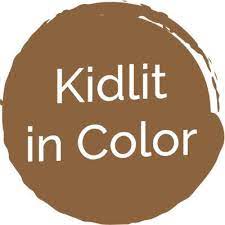
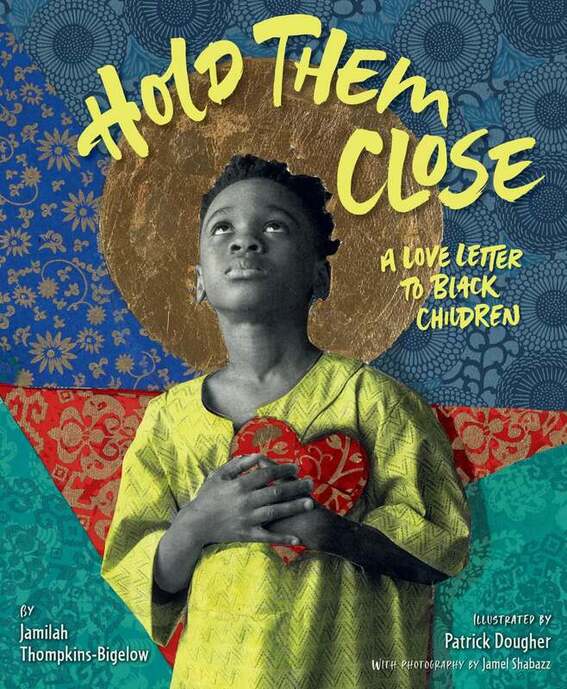
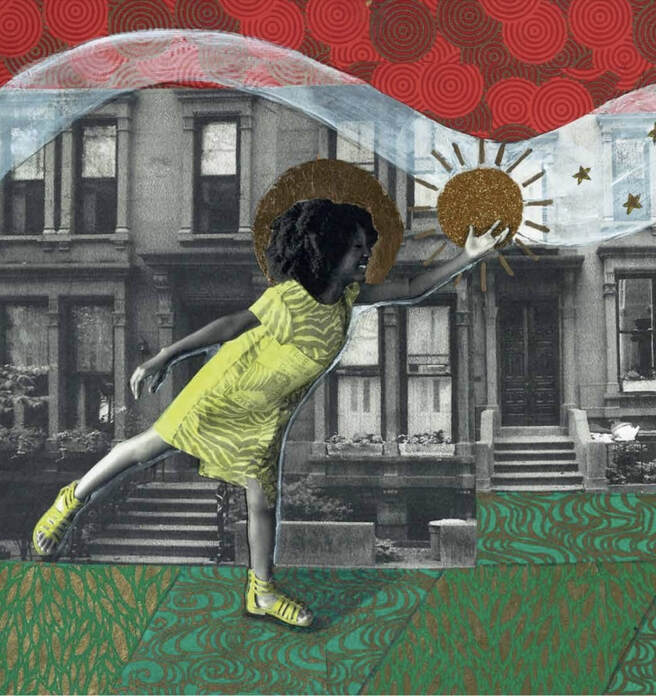
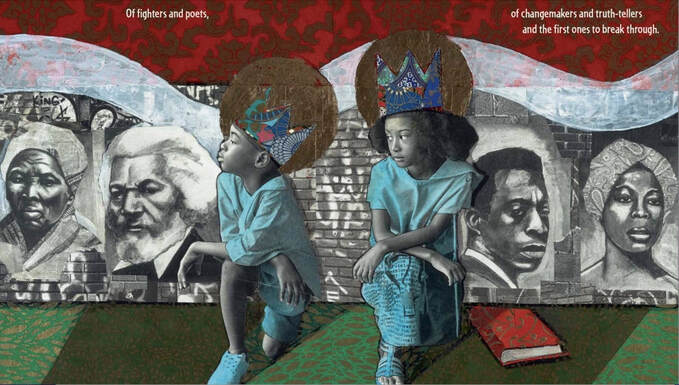
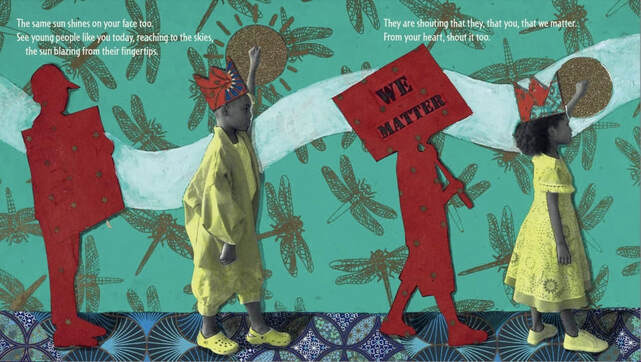
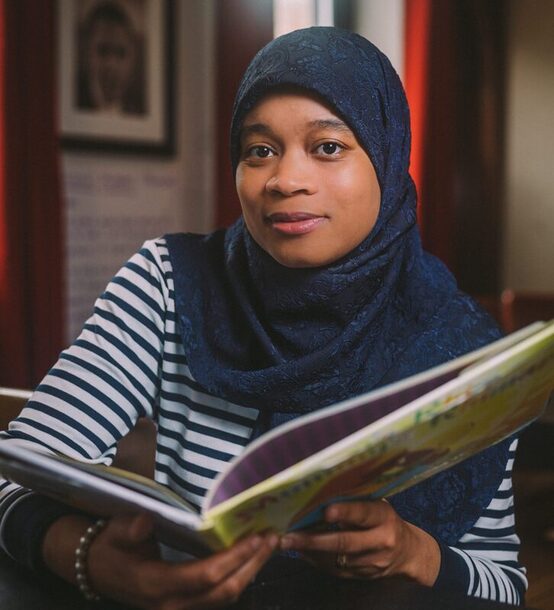
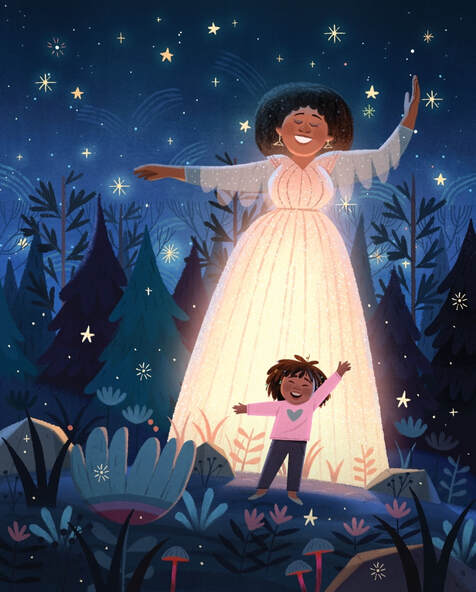
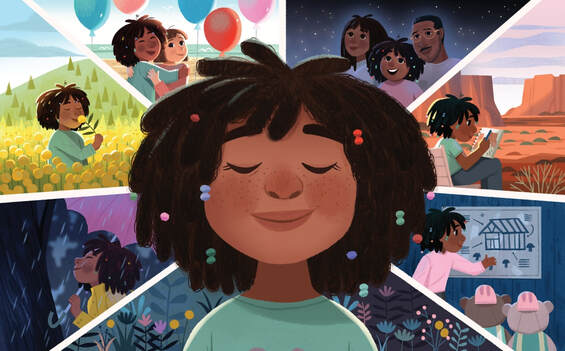
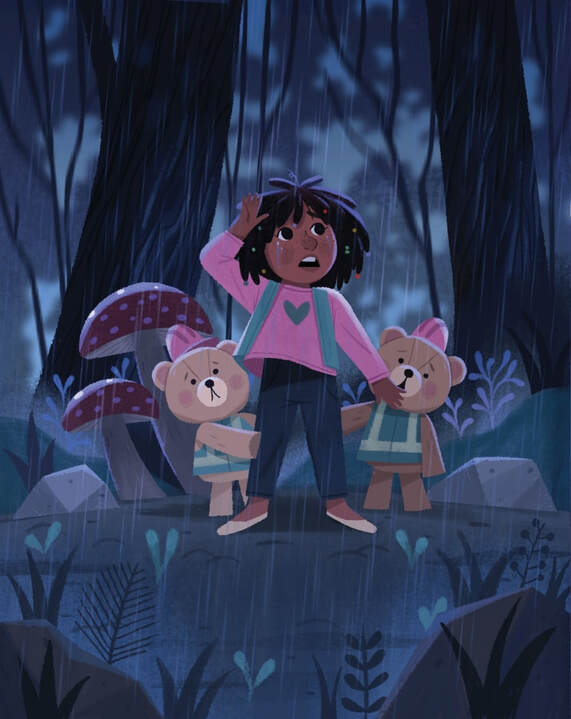
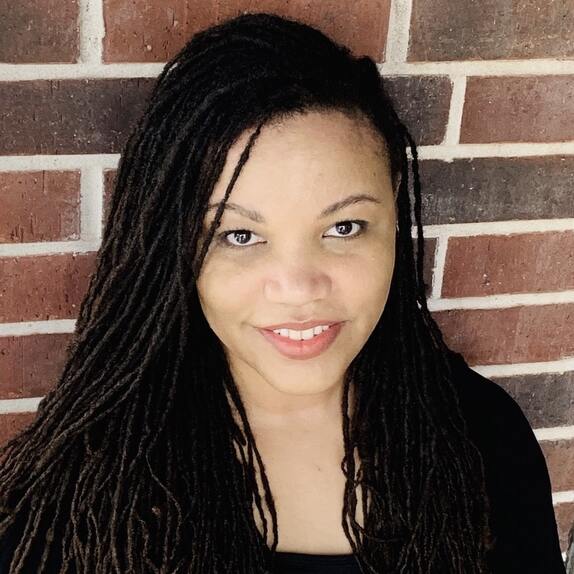
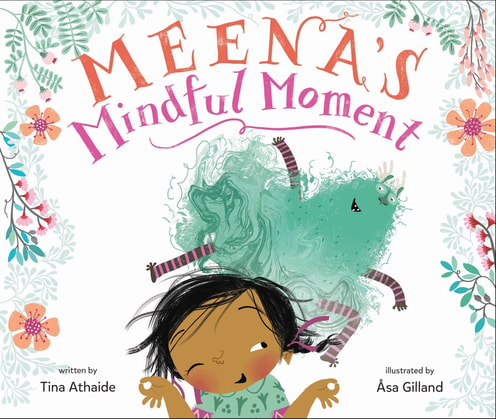
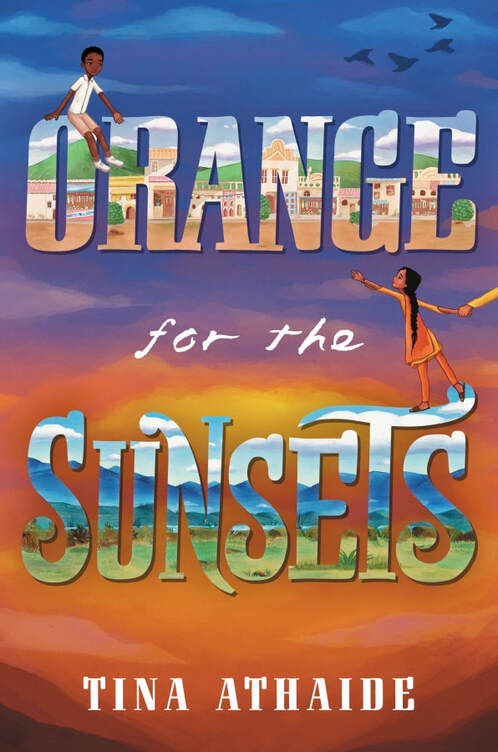

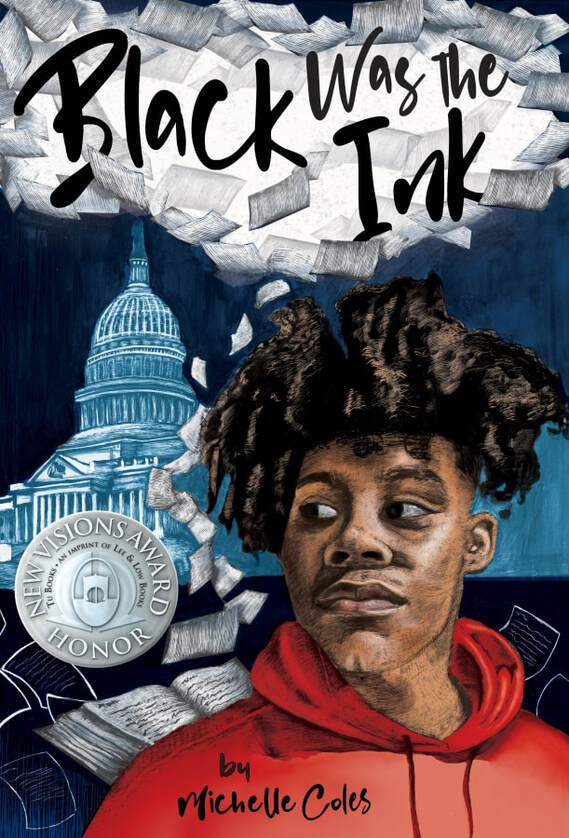
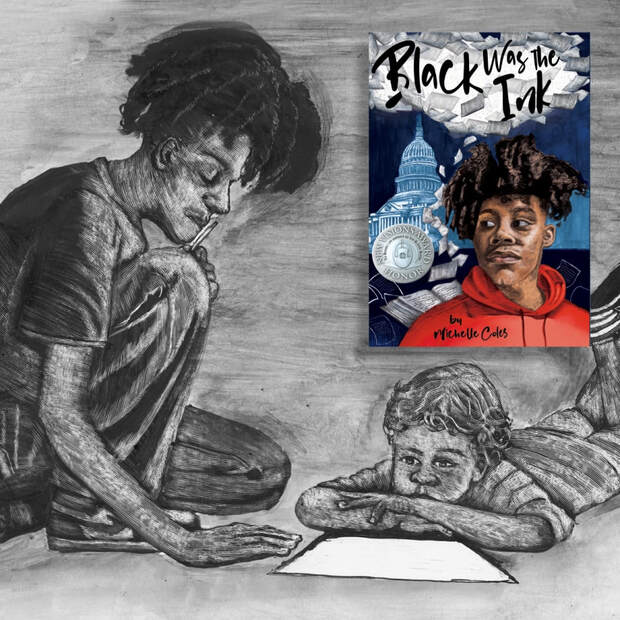
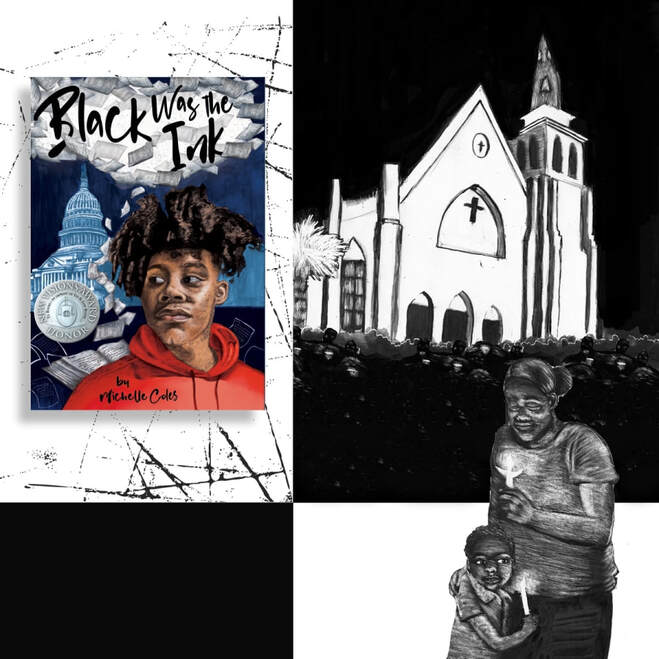
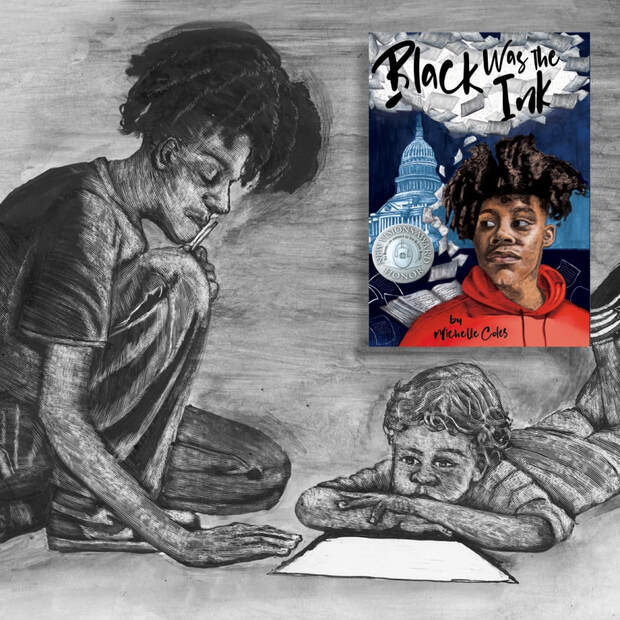
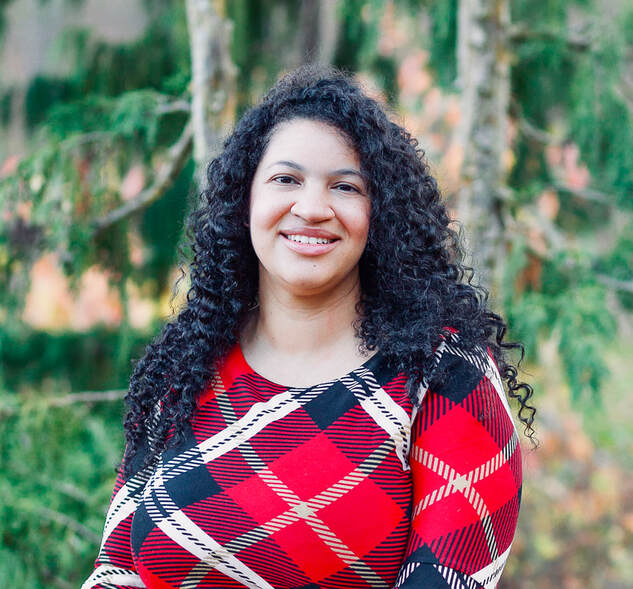
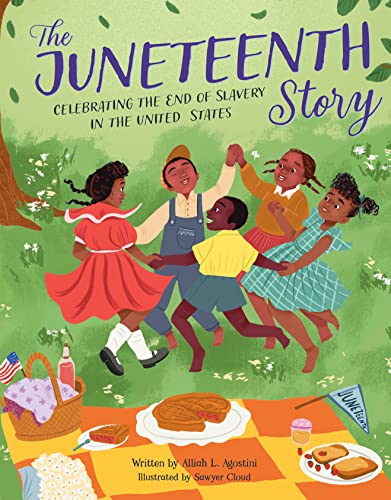
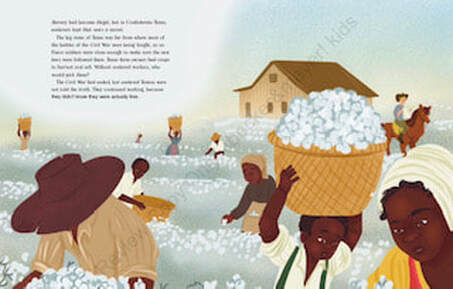
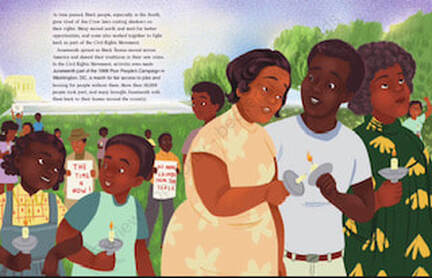
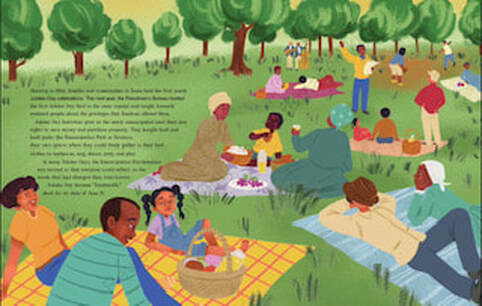
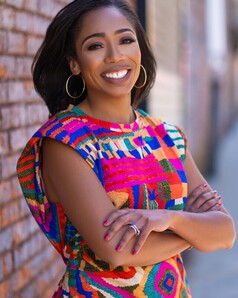
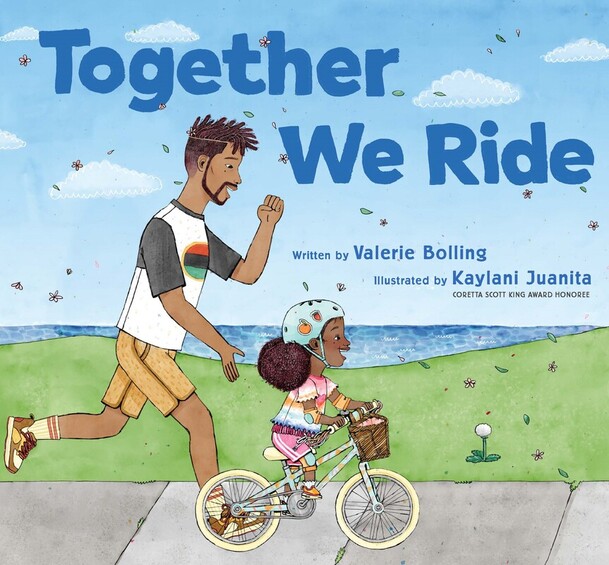
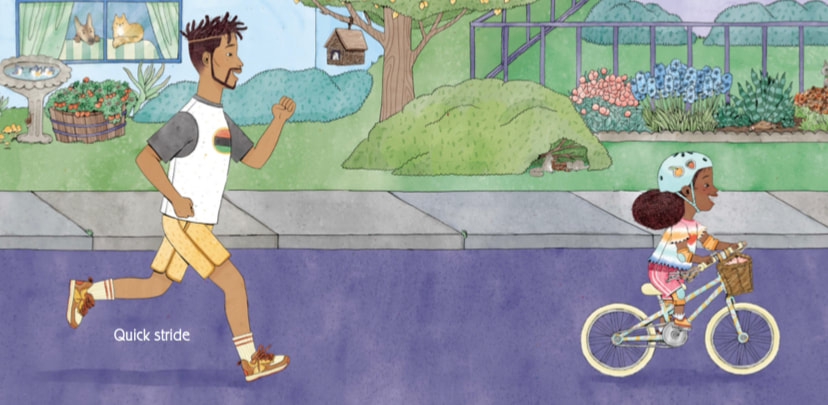
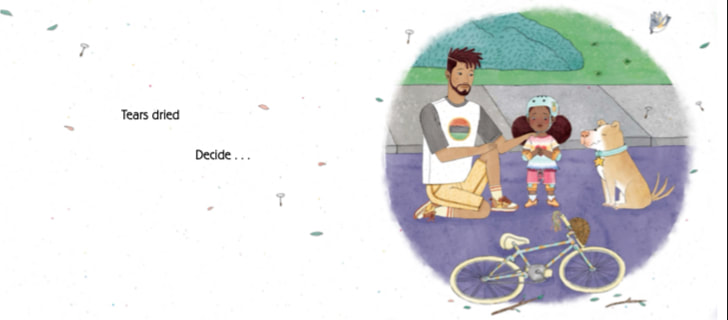
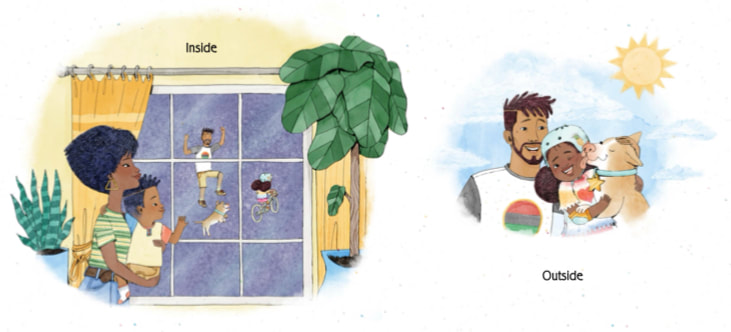
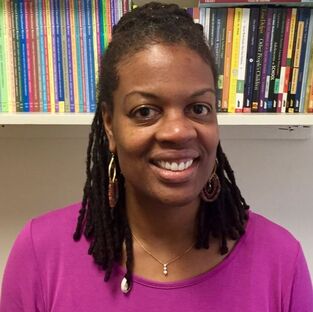
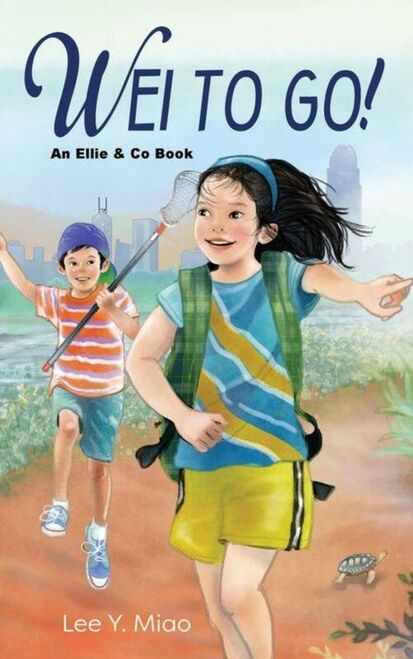

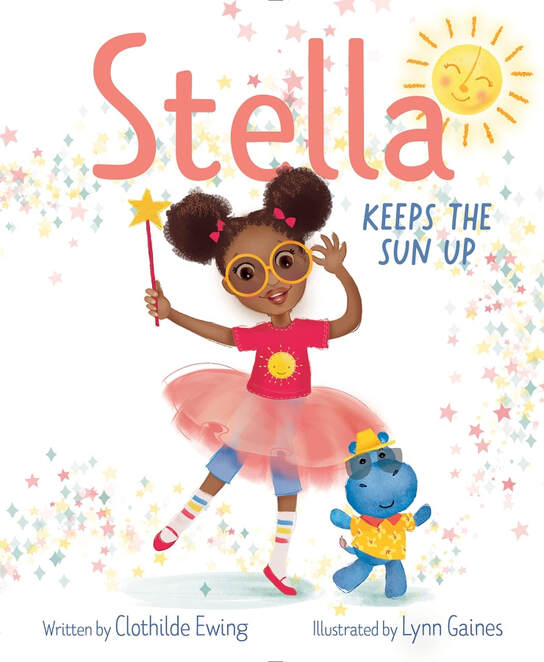
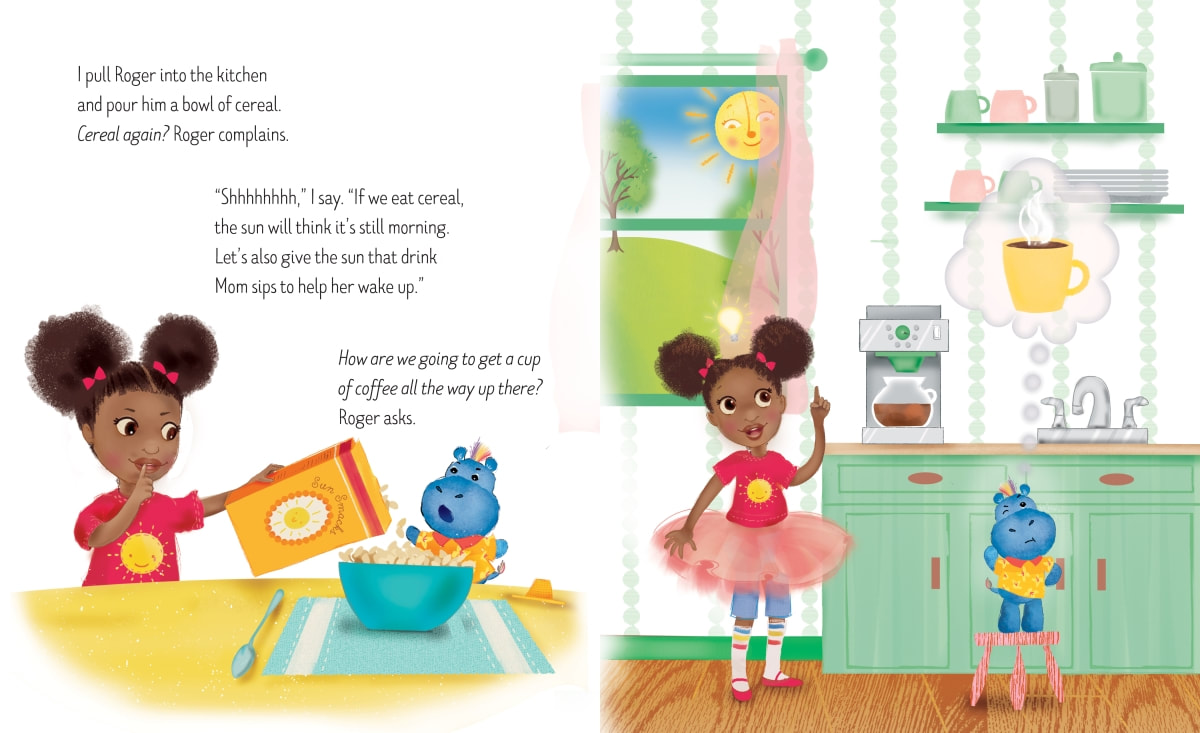
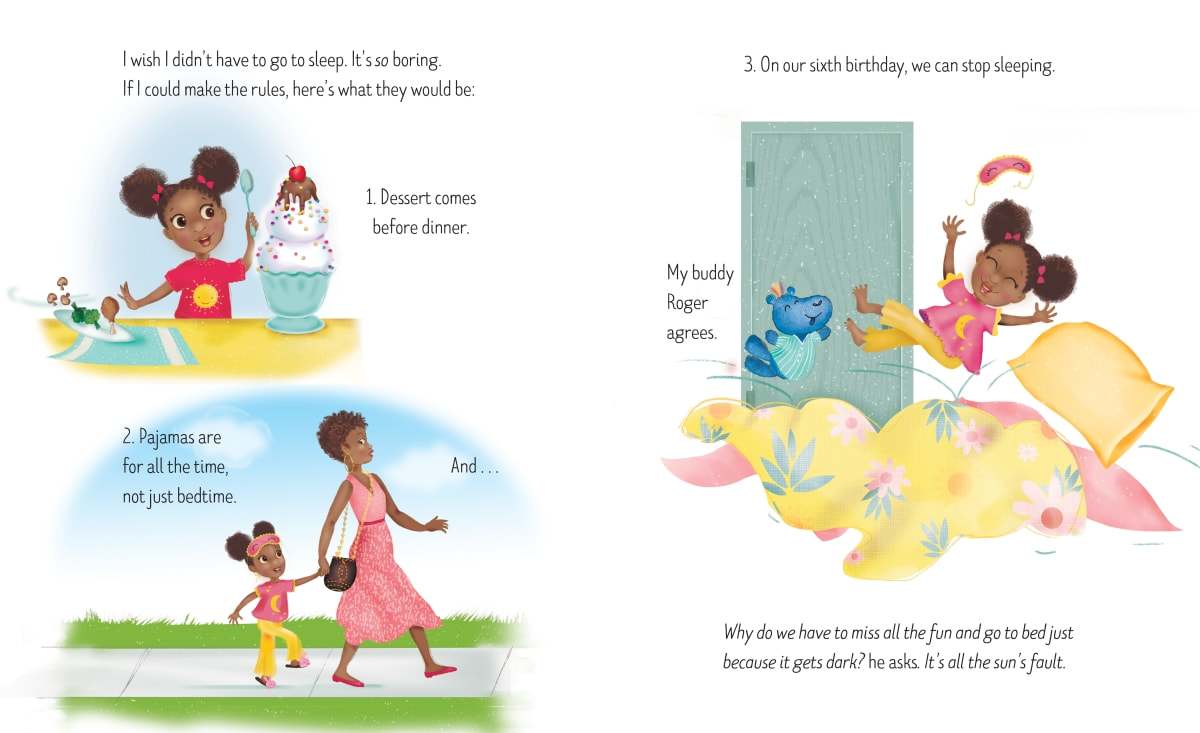
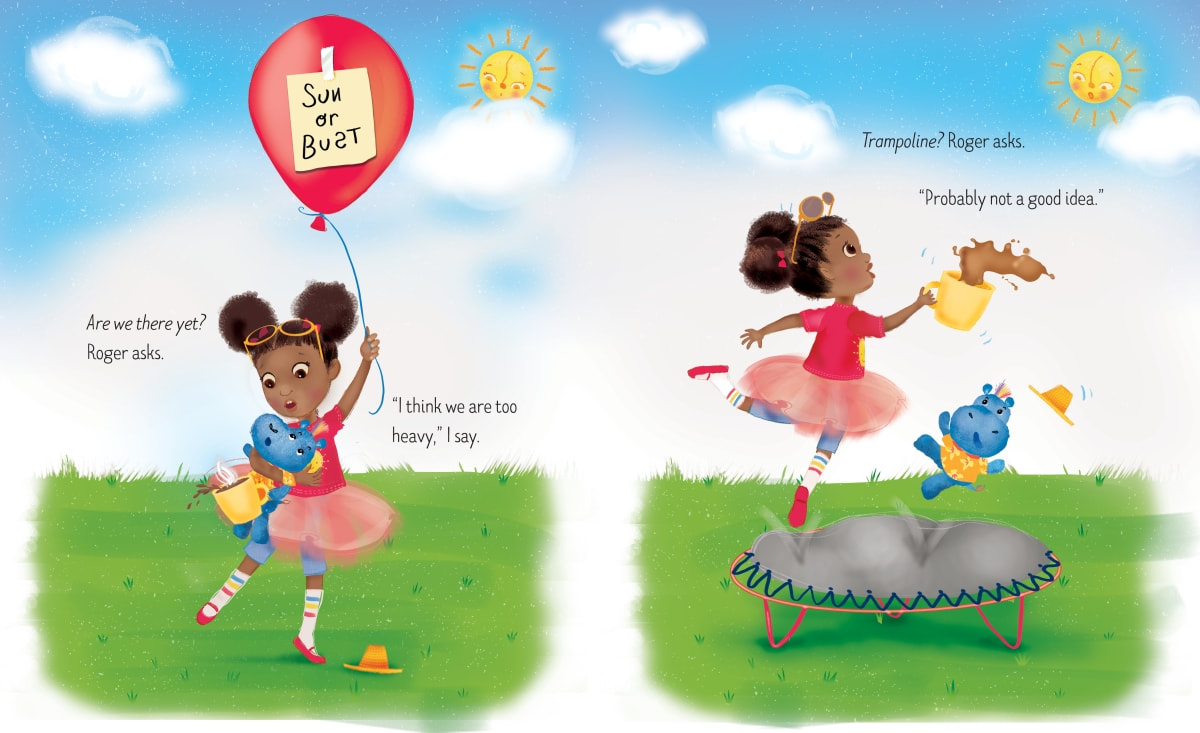
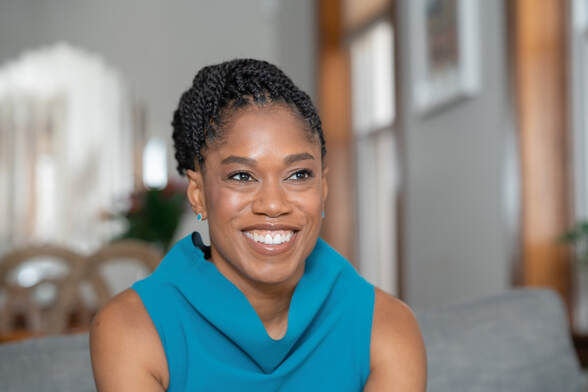
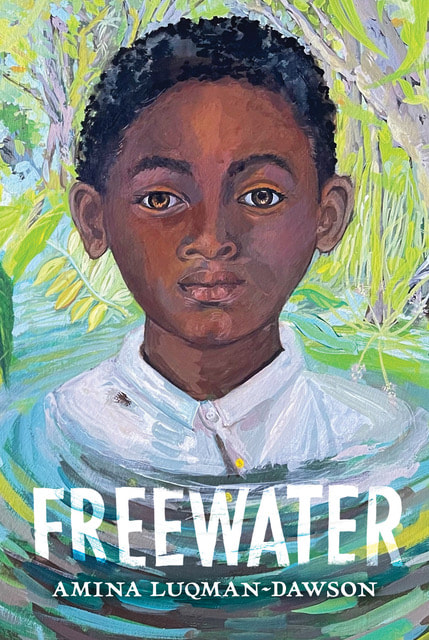

 RSS Feed
RSS Feed



